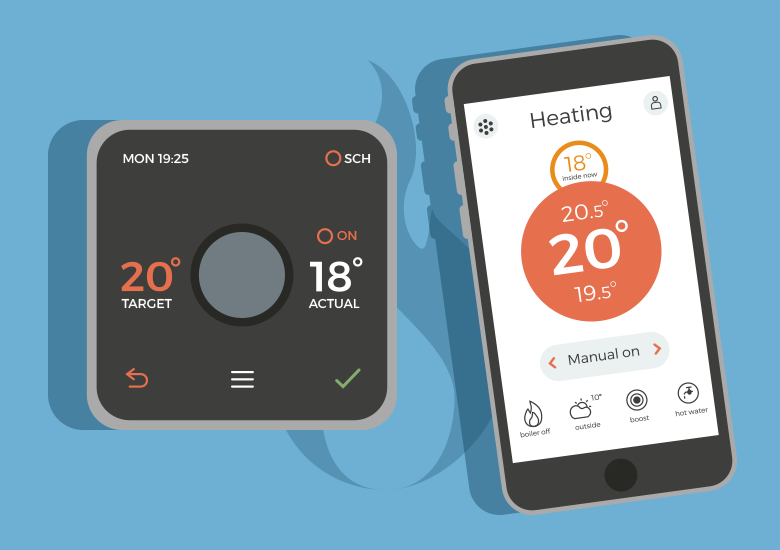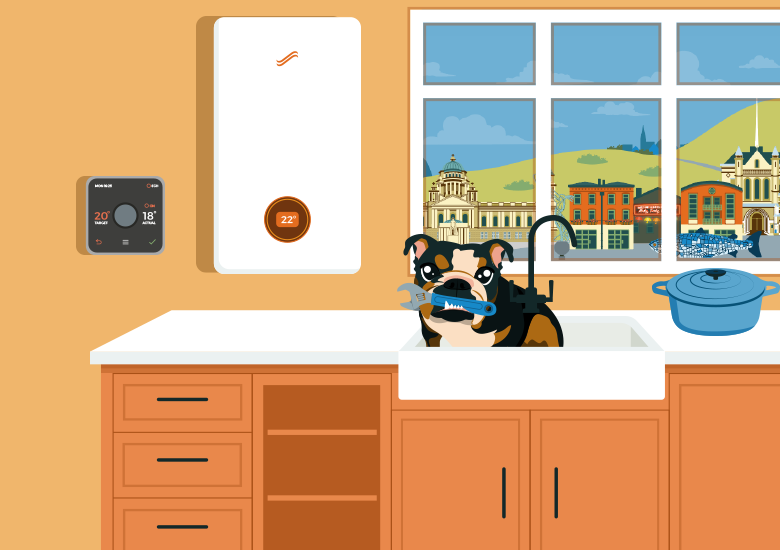
The Homeowner’s Guide to Heating Controls
Why Heating Controls Are Essential in Every Home
When it comes to keeping your home warm and energy efficient, your heating system does much more than simply switching on and off. The controls you use to manage your boiler and radiators play a huge role in both comfort and running costs. Many households still rely on outdated or basic heating controls, but upgrading to modern solutions can make a significant difference to your energy bills and overall comfort.
This guide explains the different types of heating controls available, how they work, and which might suit your home best.
Why Heating Controls Matter
Heating controls are not just accessories – they are essential tools for making the most of your central heating system. By ensuring that your home is heated at the right time and to the right temperature, they:
- Prevent wasted energy
- Reduce household bills
- Extend the lifespan of your boiler
- Improve comfort with more consistent heating
According to the Energy Saving Trust, installing and properly using heating controls could save the average household around 10–15% on annual heating costs. That means choosing the right controls can quickly pay for itself.
Types of Heating Controls:
Room Thermostats
A room thermostat monitors the temperature in your home and turns the heating on or off to maintain your chosen setting. Modern digital thermostats are much more accurate than older dial types, helping reduce wasted energy.
- Best for: Homes that want straightforward temperature control.
- Tip: Place the thermostat in a room you use most often, away from draughts or direct sunlight, for the most accurate reading.
Programmable Thermostats
These allow you to set different temperatures for different times of day. For example, you can schedule the heating to come on before you wake up and turn down when you leave the house.
- Best for: Families with regular routines.
- Benefit: No need to manually adjust the heating every time you leave or come home.
Thermostatic Radiator Valves (TRVs)
TRVs are fitted onto individual radiators, allowing you to control the temperature in each room separately. For example, you might want the living room warm in the evening but keep the bedrooms cooler.
- Best for: Larger homes where some rooms are used less frequently.
- Benefit: More personalised comfort and reduced waste.
Smart Thermostats
Smart thermostats connect to your Wi-Fi and can be controlled via smartphone, tablet, or voice assistant. Many can also “learn” your routine and adjust heating automatically.
- Best for: Tech-savvy households and those wanting maximum control.
- Features often include:
- Remote control while you’re out
- Zoning (different areas heated independently)
- Weather and occupancy sensors
- Energy usage reports
Advanced Heating Controls
Some modern boilers can integrate with weather-compensating controls or load-compensating thermostats. These adjust boiler output depending on conditions outside or inside, helping the system run more efficiently.
- Best for: Newer boilers and eco-conscious households.
- Benefit: Greater efficiency and smoother temperature regulation.

Choosing the Right Heating Controls for Your Home
When deciding which heating controls are right for you, consider:
- Your routine: Do you need simple manual control or full scheduling?
- Home size: Larger homes benefit more from TRVs and zoning.
- Budget: Basic thermostats are inexpensive, while smart systems cost more but can pay back in savings.
- Future plans: If you plan to upgrade your boiler or move towards greener heating, advanced controls will help you get the most from it.
Tips for Using Heating Controls Effectively
Simply installing controls isn’t enough – how you use them makes all the difference. Here are a few best practices:
- Set the right temperature: Aim for around 18–21°C depending on the room.
- Avoid constant manual changes: Let your controls do their job. Constant adjustments waste energy.
- Schedule around your lifestyle: Heat your home when you need it, not when you don’t.
- Use TRVs wisely: Keep bedrooms cooler than living spaces for comfort and savings.
- Check regularly: Review your settings seasonally and after household changes.
The Bottom Line
Heating controls may not be the first thing you think of when considering home improvements, but they are one of the simplest and most effective ways to cut bills, improve comfort, and reduce your carbon footprint. Whether you opt for a straightforward room thermostat, programmable controls, or a full smart system, the right setup will help your heating system work harder for less.
If you’re unsure which heating controls would best suit your home, the expert team at Hynes Plumbing & Heating can advise, install, and maintain the perfect solution tailored to your household.
